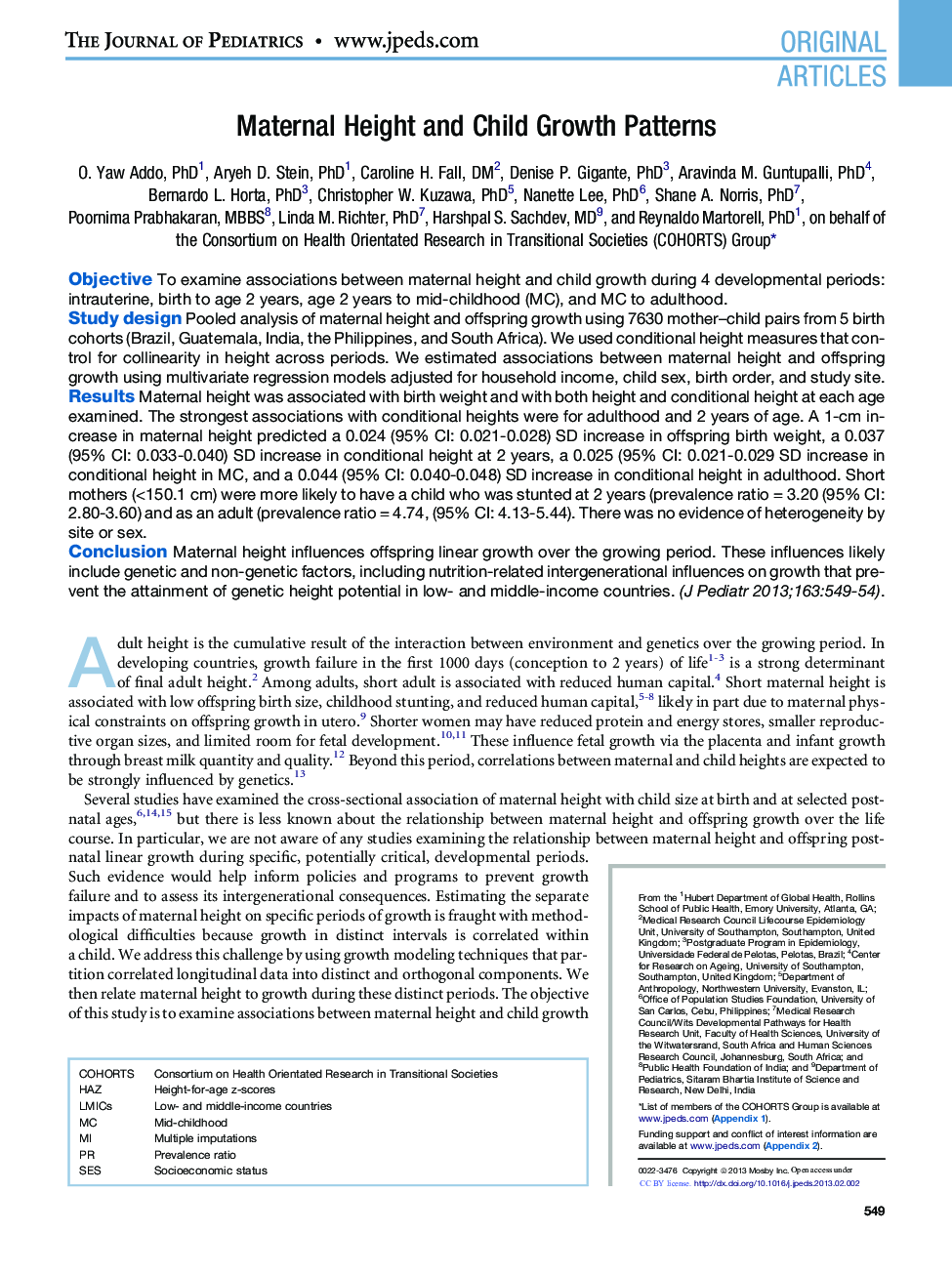| Article ID | Journal | Published Year | Pages | File Type |
|---|---|---|---|---|
| 6223561 | The Journal of Pediatrics | 2013 | 7 Pages |
ObjectiveTo examine associations between maternal height and child growth during 4 developmental periods: intrauterine, birth to age 2 years, age 2 years to mid-childhood (MC), and MC to adulthood.Study designPooled analysis of maternal height and offspring growth using 7630 mother-child pairs from 5 birth cohorts (Brazil, Guatemala, India, the Philippines, and South Africa). We used conditional height measures that control for collinearity in height across periods. We estimated associations between maternal height and offspring growth using multivariate regression models adjusted for household income, child sex, birth order, and study site.ResultsMaternal height was associated with birth weight and with both height and conditional height at each age examined. The strongest associations with conditional heights were for adulthood and 2 years of age. A 1-cm increase in maternal height predicted a 0.024 (95% CI: 0.021-0.028) SD increase in offspring birth weight, a 0.037 (95% CI: 0.033-0.040) SD increase in conditional height at 2 years, a 0.025 (95% CI: 0.021-0.029 SD increase in conditional height in MC, and a 0.044 (95% CI: 0.040-0.048) SD increase in conditional height in adulthood. Short mothers (<150.1 cm) were more likely to have a child who was stunted at 2 years (prevalence ratio = 3.20 (95% CI: 2.80-3.60) and as an adult (prevalence ratio = 4.74, (95% CI: 4.13-5.44). There was no evidence of heterogeneity by site or sex.ConclusionMaternal height influences offspring linear growth over the growing period. These influences likely include genetic and non-genetic factors, including nutrition-related intergenerational influences on growth that prevent the attainment of genetic height potential in low- and middle-income countries.
